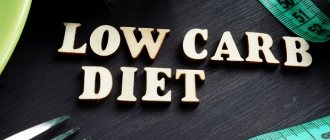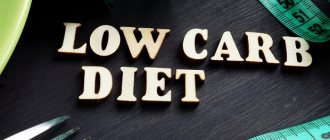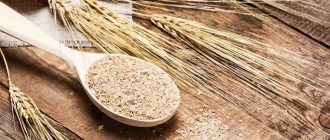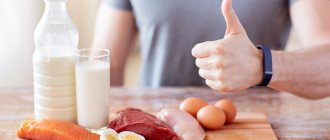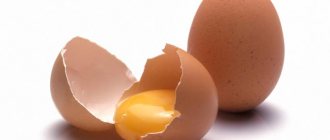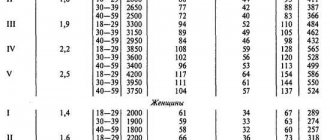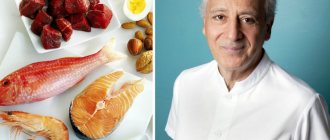When choosing a diet, a person focuses on the effectiveness of the method, personal preferences and the availability of food. Another possible motive is curiosity. The paleo diet has received positive reviews among professional athletes and those who care about their health, the menu of which is accessible to everyone and does not require much time for cooking. Such nutrition will get rid of extra pounds, help you feel light, and improve the health and condition of your hair, nails and skin. So how does the Paleo diet work and what is it? Let's find out!
The paleo diet is based on the principles of the supposed diet of a Stone Age inhabitant. In the menu of ancient man one cannot find milk and dairy products, grains, sugars and, in principle, food that undergoes technical processing and contains chemical additives.
The basis of nutrition is high-quality protein products (meat and poultry, fish and seafood, eggs) and fiber-rich fruits and vegetables, nuts and berries. To summarize, the diet uses those foods that the caveman obtained by hunting or gathering.
In this article we will cover:
- what are the principles of nutrition and what is the paleo diet in principle;
- athletes of which sport like the principles of nutrition in the image and likeness of ancient man;
- what the autoimmune protocol is and how it works;
- how to create a menu for the week from the allowed list of paleo foods.
What is the paleo diet
The full name is the Paleolithic diet or “diet of the ancients.” American nutritionists Lauren Corday and Oz Garcia suggested eating according to the principle of the ancestors of the Paleolithic era. Researchers have suggested that since that time there have been no changes in the human genetic code, so the best option for the body is to eat natural foods.
Prepared foods, semi-finished products, products with flavor enhancers and emulsifiers are harmful to health. The founders of the paleo diet suggest getting rid of such ingredients for a while in order to track changes in your body and cleanse it. The main goal of eating according to the principle of ancient man is to restore health, and those losing weight noted positive results in losing extra pounds by practicing a diet.
The Paleolithic nutrition menu is rich in vitamins, microelements and promotes:
- stabilization of hormonal levels;
- reduction of fat layer;
- reducing blood sugar and “bad” cholesterol;
- regulation of blood pressure;
- reducing stress and improving mood;
- prevention of atherosclerosis, hypertension and other disorders of the cardiovascular system.
AIP protocol menu
The AIP protocol is an excellent remedy against autoimmune manifestations, follow the above recommendations and you will succeed!
Modern approach
However, in recent years, many studies have been conducted on the treatment of this disease and it has been noted that people suffering from psoriasis often have a lack of vitamin D in the blood, and vitamin D3 supplements, and accordingly increasing the concentration of calcidiol in the blood serum, can significantly improve the patient’s condition. Scientists from many countries - Japan ( https://www.ncbi.nlm.nih.gov/pubmed/29074837 ), Ireland ( https://www.ncbi.nlm.nih.gov/pubmed/28674914 ), Italy ( https: //www.ncbi.nlm.nih.gov/pubmed/28176237 ), Germany ( https://www.ncbi.nlm.nih.gov/pubmed/28054069 ) and many other countries have recognized that active vitamin D has an immunomodulatory effect and a strong effect on cellular differentiation and proliferation in the skin.
Professor Coimbra's opinion
Professor Coimbra associates autoimmunity in patients with psoriasis with vitamin D deficiency and resistance to it. And the use of high doses of vitamin D3 can compensate for inherited resistance to its biological effects. Professor Coimbra and his close associate Dr. Danilo Finamore, based at the Federal University of Sao Paulo (Brazil), conducted a study ( https://pubmed.ncbi.nlm.nih.gov/24494059/ ) the purpose of which was to evaluate the effectiveness and safety of long-term use of high doses vitamin D3 in patients with psoriasis and vitiligo. Nine patients suffering from psoriasis and 16 from vitiligo received vitamin D3 at a dose of 35,000 IU once daily for six months. At the same time, they were on a low-calcium diet (excluding dairy products and foods artificially fortified with calcium, such as olive, rice or soy milk), and they were hydrated with at least 2.5 liters of fluid per day. The condition of patients with psoriasis was assessed using the PASI index (a series of indicators used to assess the severity of psoriasis) before and after treatment. A proprietary scale was used to assess the clinical response of patients with vitiligo. All patients had low blood vitamin D levels (≤ 30 ng/ml) at baseline. After treatment, 25(OH)D3 levels increased significantly (from 14.9 ± 7.4 to 106.3 ± 31.9 ng/ml in patients with psoriasis and from 18.4 ± 8.9 to 132.5 ± 37. 0 ng/ml in patients with vitiligo), and PTH levels decreased significantly (from 57.8 ± 16.7 to 28.9 ± 8.2 pg/ml in patients with psoriasis and from 55.3 ± 25.0 to 25 .4 ± 10.7 pg/ml in patients with vitiligo) At the end of treatment, PASI scores improved significantly in all nine patients with psoriasis. Fourteen of 16 patients with vitiligo had 25-75% reproduction. The content of urea, creatinine and calcium (total and ionized) in the blood of patients did not change, and the excretion of calcium in the urine increased within the normal range. In summary, this study demonstrated that high-dose vitamin D3 therapy is effective and safe for patients with vitiligo and psoriasis.
Treatment examples
Therapy with high doses of vitamin D has already helped many patients with psoriasis achieve stable remission. These photos were shared by Massimo Vincenti, a specialist doctor of the Coimbra protocol from Italy. The photo shows patients before the start of treatment and after three months of treatment according to the Coimbra protocol.
Results of treatment for psoriasis Results of treatment for psoriasis-2
And this is a photo of a woman from Germany who is being treated for multiple sclerosis and psoriasis. She started protocol treatment 10 months ago. The bottom right photo is from the first day of treatment, the top right is 5 days after treatment, and the photo on the left was taken just 9 days after starting high dose vitamin D. Her MS symptoms are also improving.
Results of treatment for psoriasis-3
Just the name “autoimmune paleoprotocol” can easily make many people lose their appetite. What kind of protocol is this, what does it have to do with autoimmune disease, and what does “paleo” have to do with it? MedAboutMe will answer these and other questions.
Advantages and Disadvantages of the Paleo Diet
The nutritionist community is divided into two camps:
- Some consider the paleo diet to be dangerous to health due to the risk of disruption of body functions with prolonged practice of the approach.
Opponents rely on studies that indicate a risk of developing cardiovascular disease due to excessive amounts of protein in the diet. At the same time, scientists categorically do not accept the exclusion of complex carbohydrates, which include cereals, arguing that this is due to a slowdown in metabolism, gastrointestinal disorders, disruption of the hormonal system and a decrease in vitality.
- Followers of ancient man's nutrition insist that high-quality protein products in combination with vegetables and fruits will strengthen the immune system, promote weight loss and make skin, hair and nails healthy.
Benefits of the Paleo Diet
There are three main beneficial aspects of paleo:
Speed of result
Replacing carbohydrate products with protein and large amounts of fiber is a set of changes in eating behavior that leads to rapid weight loss. Already in the 3rd week, changes in volume and reflection in the mirror are noticeable, so this approach is popular among those losing weight.
No feeling of hunger
On a Paleolithic diet, you will not have to go hungry due to stable blood sugar levels. Products on the approved list have a low glycemic index. This means that glucose enters the blood in small doses, insulin is stable, and appetite is under control.
Caloric content of the diet
The daily calorie intake is calculated individually, because the diet does not have a strict framework. It is enough to consume permitted foods, excluding forbidden foods. Compared to standard calorie-reducing diets, paleo nutrition practices keeping glucose levels low, which leads to the loss of subcutaneous fat.
Food according to AIP protocol
Traditional treatment of autoimmune diseases is based on immunosuppression and symptomatic treatment of the patient. But this approach does not eradicate the cause, it only masks it and aggravates the situation over time. Plus, almost all medications have side effects!
Unlike medications, the AIP diet has no side effects, is gentle and shows good results.
The AIP protocol is considered one of the directions of the Paleo diet.
The most popular AIP protocols:
- Terry Waltz Protocol
- Sarah Ballantyne Protocol (this nutritional protocol is much stricter)
General principles of the autoimmune protocol
- Normal intake of all macro and microelements necessary for the body.
- Normalization of intestinal microbiota.
- Normalization of hormonal levels.
- Fighting stress.
- Sonation and treatment of chronic foci of disease and inflammatory processes.
The most common diseases for which the AIP diet is prescribed are: diabetes, psoriasis, rheumatoid arthritis, autoimmune thyroiditis.
Crossfit and paleo
In CrossFit, women and men keep their bodies in shape by getting rid of subcutaneous fat in order to successfully complete training routines. Training with high duration and intensity in tandem with a paleo diet can get rid of excess weight in a short time.
Mechanism of operation: intensive training aimed at all muscle groups requires the body to recover immediately after the end of the session. During this period, muscle tissue has depleted glycogen reserves, which athletes usually replenish with fast carbohydrates.
Consuming protein immediately after training activates the process of ketosis (the breakdown of fat reserves for energy), so the combination of CrossFit and Paleolithic nutrition helps to lose excess weight.
Intense physical activity in CrossFit on a paleo diet can lead to fatigue. To prevent overtraining, it is recommended to include in the menu fruits rich in carbohydrates, starch, pectin - grapes, apples and pears, bananas, peaches. Sources of fats and amino acids are nuts, red fish, unrefined oil.
Reviews from elite athletes about the paleo diet
The Paleo diet and CrossFit are considered young phenomena, dating back to the 2000s. However, training results, strength indicators and feedback from athletes deserve special attention.
The pioneer in testing the Paleolithic diet was CrossFit founder Greg Glassman. Having experienced the effectiveness from personal experience, the athlete recommends following the principles of nutrition: eat meat, nuts and seeds, remove sugar and flour products in order to increase the effectiveness of training and not gain weight due to fat. Glassman states that the paleo diet is the most optimal for humans, and the abuse of carbohydrates leads to the development of diabetes.
Famous in professional women's CrossFit, Jackie Perez is also a proponent of the ancient man diet. Before multifunctional training, Jackie paid attention only to cardio and strength training in the gym, without monitoring her nutrition. For a long time, the body shape remained unchanged. But when the athlete came to the CrossFit gym, started working out with a trainer and maintaining a paleo diet, she didn’t have to wait long for results.
The most important nutrients for the AIP protocol:
- Electrolytes, minerals, micro and macroelements. Can be obtained from Himalayan salt.
- Vitamin-D. It is better to take the CMS method; if you check it using the ELISA method, the result may be inaccurate, and in the direction of increase.
Read all about vitamin D and how to take it based on the latest research here.
- Omega 3 fatty acids. The source is wild fish with fat around the waist. As an option, dietary supplements. But remember that Omega is destroyed when heated. It is advisable to choose one that was made from krill and small fish. This is due to the fact that they accumulate to a lesser extent all kinds of harmful substances, for example, heavy metals.
Important! The dose for an adult per day should be 2.4-3 grams. EPA content is at least 900 mg (maybe 2 capsules), DHA from 400 mg (at least 200 mg in one capsule).
Taking Q10 together enhances the beneficial properties of Omega 3.
- K-potassium.
- Mg-magnesium . Participates in most chemical reactions in our body. Used up quickly during extreme physical activity and stress! This chemical element must be included in the AIP protocol, and in two states:
Magnesium citrate – has a mild laxative effect
Magnesium malate – anti-stress, anticonvulsant, tonic, anti-stress, participates in carbohydrate metabolism.
It is best to take these two options at night, after dinner.
- An effective diet for psoriatic arthritis: step-by-step recommendations for restoring the body
- Vitamin C. Must be constantly supplied to the body for normal oxidative reactions. An overdose of this vitamin is dangerous! Especially when taken systematically. If you need a dietary supplement, pay attention to Ascorbyl Palmitat.
- Coenzyme Q10 – scientists received the Nobel Prize for it. Participates in the energy exchange of every cell of the human body. Take in the morning for 30-60 days, then break for the same amount and again. Relevant for everyone, including athletes.
- PQQ is a protector of cell membranes and is involved in cell division. Improves mitochondrial function. Take 1-2 times a day. Better in the morning.
What else helps with the autoimmune protocol?
In addition to correcting your diet, you need to pay attention to your activity during the day. Only an integrated approach will help you quickly get the desired effect and improve your body’s health.
- Don't forget about quality sleep
- Fight stress (meditation, auto-training, psycho-training)
- Live and be active according to the sun
- Play sports
- Be friends. Humans are social creatures, so it’s good to have someone nearby who will listen or support!
Contraindications
Contraindications to the paleo diet are:
- disruption of the liver and kidneys;
- exacerbation of chronic diseases;
- problems with the functioning of the gastrointestinal tract;
- pregnancy, breastfeeding period.
- The approach is not recommended for adolescents and children.
Important Terms
If you feel weak and dizzy while on a diet, the reason for this is a deficiency of calories consumed. To provide the body with the necessary amount of energy, it is recommended to increase portions of meat, poultry or fish. It is useful to eat nuts between meals.
Errors when switching to the AIP protocol
- A sudden start without preparation. There may be a breakdown or deterioration in health. A sudden change in diet can lead to an imbalance in the body, as a result, nervous tension will increase and some diseases may even worsen.
- Keep your diet. Don't think that "a little bit won't hurt"!
- The condition may worsen, but you should not immediately give up everything and return to your usual diet, watch for another 1-2 days. Don't forget that everything is done under the supervision of a specialist!
- Don’t wait until the end of the diet, try to get used to the new diet and don’t stress yourself out!
- Do not stop following the AIP protocol if you feel significantly better!
- Do not try to convert your relatives, friends and loved ones to your diet.
What is the autoimmune protocol
An offshoot of Paleo nutrition is an autoimmune protocol that focuses on nutrient-rich foods and strictly limiting allowed ingredients. The system looks at food for its effects on the body, which may support health or contribute to the development of autoimmune diseases. Meat by-products, seafood, vegetables are a vivid example of food containing useful macro and microelements that improve the condition of the body.
Health problems are caused by foods containing gluten, peanuts, and soy. The golden mean between two opposite groups is tomatoes (the substances that make up the vegetable stimulate the immune system and are used in pharmacology in the development of vaccines).
The autoimmune protocol differs from the paleo diet in the list of permitted and prohibited foods. The difference depends on the complexity of the disease - the better the health, the more you can afford, and vice versa. It can be said that the technique is stricter in its approach to food, leaving the best for each person.
The main goal is to saturate the body with essential nutrients (BJU) and eliminate unwanted foods that provoke an autoimmune response. In the protocol, the diet is freed from foods that interfere with health. Having completed the autoimmune protocol, everything prohibited (especially nutritional components) returns to the menu, despite the potentially harmful properties.
The Paleolithic diet has been questioned due to its novelty and popularity, but numerous studies support positive health effects. Among the advantages:
- weight loss;
- diabetes prevention;
- therapeutic effects on autoimmune diseases.
A study was conducted where 15 people with inflammatory bowel disease smoothly switched to an autoimmune protocol over 6 weeks, and then spent 5 weeks on a diet. Improvements were monitored after week 6 in 11 out of 15 subjects in the form of remission over the course of 5 weeks of the experiment.
How the Autoimmune Protocol Works
The work of the Paleo Autoimmune Protocol extends to 4 areas susceptible to autoimmune diseases. Thanks to research, recommendations have been formed:
Nutrients
Full functioning of the immune system is possible if it is saturated with vitamins, minerals, antioxidants, amino acids and fatty acids. The cause of the development of autoimmune pathologies is an imbalance and deficiency of nutrients. If you focus on consuming foods rich in microelements, imbalances and deficiencies in the immune, excretory, hormonal and nervous systems are reduced. Standard indicators will help restore damaged tissue.
Gut Health
Dysbacteriosis is a trigger for the development of autoimmune pathology. Paleo foods can maintain the balance of beneficial intestinal microorganisms. Avoid foods that can damage or disrupt the mucous membrane.
Hormonal regulation
Food directly affects hormones, which are also related to immunity. If there is a lot of sugar in the diet, it causes hormones to work in a frantic rhythm, stimulating the immune system. The Autoimmune Protocol diet will restore balance. In addition, it is important to get enough sleep, spend more time outdoors and lead an active lifestyle.
Immune regulation
Regulation is carried out by introducing diversity and a sufficient number of microorganisms in the intestines.
Quitting the diet
Grains are gradually introduced into the diet in portions. It is recommended to alternate oatmeal, buckwheat, and brown rice. Butter remains restricted and is introduced in the second week of leaving the diet. In the second week, you can add unrefined vegetable oil.
Purpose of AIP
The goal of the autoimmune protocol diet is to temporarily (usually for several months) eliminate potentially problematic foods, healing the gut, which contains about 70-80% of the immune system, the important gut microbiome. Studies have shown that in autoimmune diseases and disorders, the intestines are in most cases imbalanced, there is dysbiosis, and increased permeability (leaky gut syndrome). Restoring intestinal health and microflora provides a high probability of symptoms disappearing.
AIP is about more than just nutrition. It also includes general lifestyle:
- stress management;
- improved quality and abundance of sleep;
- movement - mainly in the fresh air, in close contact with nature (walks in the forest, walking barefoot, gardening);
- use of non-toxic cosmetics;
- environmental changes (avoiding chemicals, mold, chemical cleaners).
When you start following the AIP diet, you may experience fatigue and a feeling of hunger. It is mentally difficult for a person who was previously accustomed to a large amount of sweet food to give up sweets. Usually this condition stabilizes, and “normal” health appears. After overcoming several painful days, a pleasant feeling appears. The person begins to feel better. This is the goal of the diet - to heal the intestines, strengthen the immune system, and identify problematic foods.
Comments from nutritionists
Nutritionists around the world paid attention to the new product. Doctors agree that a natural diet will help reduce the percentage of subcutaneous fat. Proper nutrition – disease prevention. The list of permitted products is unique and suitable for everyone. The exception included people with pathologies of the stomach and kidneys.
Experts recommend monitoring the processes occurring in the body at the time of change in eating behavior to the Paleolithic principle of nutrition and adjusting the menu, focusing on individual characteristics.
Who is prescribed the AIP diet?
The autoimmune diet menu is suitable for many people, in particular those suffering from the following diseases and disorders:
- allergy;
- atopic eczema;
- thyroid diseases;
- ADHD, other forms of behavioral disorders;
- mental disorders;
- Crohn's disease;
- inflammatory diseases of the joints;
- weak immunity, etc.
Authorized Products
The menu includes ingredients that allow you to prepare a large number of dishes. No monotony planned! But despite the variety of components, the modern lifestyle requires more.
The main principles of compiling the main menu
The body's need for nutrients can be met by following the principles:
- observe the drinking regime, give preference to clean still water;
- eat more berries and fruits - antioxidants will tone the body, improve mood and stabilize the immune system;
- seeds, nuts, fruits and vegetables are the main ingredients of the diet that normalize the functioning of the cardiovascular system and support the myocardium;
- choose organic products;
- sources of vegetable protein – almonds and hazelnuts;
- sweets will replace honey, coconut sugar;
- source of animal protein – lean varieties of meat, poultry, fish.
Table of permitted products
The diet of “ancient man” includes:
| Product group | Products |
| Lean meat, poultry | Veal, beef, pork, chicken, turkey (preferably buy organic products) |
| Fish and seafood | Any sea fish, not fatty river fish, mussels, shrimp, squid, crabs, etc. |
| Fruits | The main source of carbohydrates. There are no restrictions on the assortment, but bananas and grapes are consumed in limited quantities |
| Vegetables and greens | Any, except potatoes (replaced with sweet potatoes), corn |
| Mushrooms | No limits |
| Nuts | No limits |
| Eggs | Chicken, quail |
| Vegetable oil | Unrefined |
List of foods recommended for the Paleo diet
At first, the diet seems very strict. But if you follow it, you can come up with healthy, tasty recipes. Quality is important in this regard.
List of foods allowed on the AIP diet:
- meat, fish, offal;
- seafood, seaweed;
- mushrooms;
- vegetables other than potatoes, peppers, tomatoes, eggplants, chili and cayenne peppers, goji;
- plantain (vegetable banana), flour from it;
- fermented vegetables;
- olives;
- any fruit, including dried;
- lard, avocado oil, coconut, olive oil;
- coconut, products made from it (flour, kefir, yogurt);
- tiger nuts;
- carob;
- honey, maple syrup (in smaller quantities);
- tapioca;
- soda;
- body;
- arrowroot;
- apple cider vinegar;
- agar, collagen, gelatin;
- water kefir, kombucha;
- fresh herbs, spices, except peppers;
- inactivated yeast;
- dandelion and chicory coffee;
- black, green, white tea, rooibos, herbal teas (leaves, not seeds), mate.
Table of prohibited products
Semi-finished products, canned food, baked goods, soda, seasonings, and sugar are removed from the diet.
| Product group | Products |
| Legumes | Chickpeas, lentils, beans, peas, peanuts (block mineral absorption) |
| Cereals, pasta | Oatmeal, buckwheat, rice, millet, pasta |
| Bread, bakery products | Bagels, bagels, pies, donuts |
| Dairy and fermented milk products | Milk, cheese, cottage cheese, kefir, cream, fermented baked milk, sour cream (an adult does not have enzymes capable of digesting lactose) |
| Sugar | Any industrial desserts, sweets, chocolate, cakes |
| Meat products | Sausages, sausages, dumplings, lard |
Foods to Avoid on the AIP Diet
For AIP to be effective, it is necessary not only to reduce the amount of food, but also to provide the body with the missing substances. Often there is an insufficient level of vitamin D, B vitamins, minerals, and hormonal imbalance. If it is not possible to increase their levels from the diet based on a blood test, such as an autoimmune disorder, the necessary nutritional supplements are included.
List of foods that should be excluded during the AIP diet:
- legumes, grain crops;
- dairy products;
- refined, industrially processed sugars, oils;
- eggs (especially whites);
- nuts;
- seeds (including coffee, cocoa, spices belonging to this product group);
- potatoes, tomatoes, eggplants, all types of peppers, goji (all spices containing these components, salads are also excluded in the AIP diet);
- gluten-containing products;
- alcohol;
- analgesics such as aspirin or ibuprofen;
- artificial sweeteners, including stevia;
- emulsifiers, thickeners, other food additives.
Menu: meal plan
To summarize: the principle of nutrition of ancient man includes an extensive list of protein components, fruits and vegetables, and nuts. Sugar, flour and processed products are excluded. The menu for a week on a paleo diet is formed depending on your favorite ingredients.
The diet is based on a number of rules:
- after waking up and between meals, drink non-carbonated clean water in unlimited quantities. Be sure to follow the drinking regime during training;
- heat treatment of vegetables is short in order to preserve vitamins;
- if necessary, a vitamin-mineral complex is added;
- daily workouts allow you to increase the amount of carbohydrates consumed due to fruits and berries;
- A gentle paleo diet involves the inclusion of milk and fermented milk products in the diet.
Paleo diet: menu for the week
Below is a possible paleo diet for the week. Suitable for athletes and those losing weight. Meals are allowed to be swapped and adjusted to personal preferences.
| MONDAY | |
| Breakfast | Three-egg omelette/hard-boiled eggs + steamed vegetables |
| Snack | Apple or banana |
| Dinner | 100-200 g white fish or chicken fillet + vegetable salad |
| Snack | A handful (100 g) of berries/30 g of any nuts |
| Dinner | Vegetable salad sprinkled with crushed nuts, dressed with olive oil or lemon juice/vegetable stew of zucchini, bell peppers, onions and carrots + portion (400-500 g) of steamed chicken |
| TUESDAY | |
| Breakfast | Two-egg omelette/hard-boiled eggs + fruit salad |
| Snack | Banana or pear + a handful of fresh berries |
| Dinner | 200 g chicken fillet/200 g beef + side dish of stewed or steamed vegetables |
| Snack | A serving of fruit salad (banana, mango, melon), sprinkled with any nuts and seasoned with lemon juice |
| Dinner | Chicken breast (200-300 g), cooked in any way + 150-200 g boiled asparagus/green beans with olive oil |
| WEDNESDAY | |
| Breakfast | Three-egg omelette with herbs + a serving of fruit salad |
| Snack | Peach + a handful of fresh berries |
| Dinner | 150 g of seafood prepared in any way + salad of Chinese cabbage, cucumbers and herbs, dressed with olive oil |
| Snack | A handful of nuts (no more than 30 g) + apple |
| Dinner | 200 g steamed red fish + stewed cauliflower |
| THURSDAY | |
| Breakfast | Two eggs + fresh berries |
| Snack | A serving of fruit salad with apples and nuts |
| Dinner | 150 g steamed white fish + fresh vegetable salad (chinese cabbage, cucumbers, onions, bell peppers) |
| Snack | Banana or pear |
| Dinner | 200-300 g chicken breast fillet with mushrooms and herbs + boiled egg |
| FRIDAY | |
| Breakfast | Three-egg omelette with herbs + a serving of fruit salad |
| Snack | Apple or a handful of grapes (100 g) |
| Dinner | 200 g beef + 150 g baked sweet potato + fresh vegetable salad |
| Snack | A handful of nuts (up to 30 g) + banana |
| Dinner | 200 g boiled fish + stewed vegetables |
| SATURDAY | |
| Breakfast | Two eggs + fruit salad |
| Snack | Banana + a handful of nuts |
| Dinner | 200 g red fish, cooked in the oven with lemon + grilled vegetables |
| Snack | A serving of fruit salad + a handful of fresh berries |
| Dinner | 200 g steamed turkey fillet + vegetable stew of cauliflower, zucchini, eggplant and onion |
| SUNDAY | |
| Breakfast | Omelette of two eggs with herbs + steamed vegetables (zucchini, cauliflower) |
| Snack | A small handful of nuts (up to 30 g) + apple |
| Dinner | 150 g beef, cooked in the oven with mushrooms + fresh vegetable salad |
| Snack | One banana + a handful of fresh berries |
| Dinner | 200 g stewed white fish with onions and herbs + a portion of steamed vegetables |
Possible disadvantages
The AIP diet is considered an elimination diet, which makes it very restrictive and potentially difficult for some, especially during the elimination phase.
The elimination phase of this diet can also make it difficult for people to eat in social situations, such as at a restaurant or at a friend's house, increasing the risk of social isolation.
It's also important to note that there is no guarantee that this diet will reduce inflammation or disease symptoms in all people with autoimmune diseases.
Additionally, those who experience a reduction in symptoms while on this diet may be reluctant to proceed to the reintroduction phase for fear that it may return symptoms.
This can become problematic because remaining in the elimination phase can make it difficult for a person to meet daily nutritional needs. Thus, staying in this phase for too long can increase your risk of developing nutritional deficiencies as well as poor health over time.
This is why the reintroduction phase is critical and should not be skipped.
If you are having difficulty starting the reintroduction phase, consider contacting a registered dietitian or other health care professional knowledgeable about the AIP diet for personalized advice.
Summary:
The AIP diet may not work for everyone, and its elimination phase is very restrictive. This can make this diet isolating and difficult to follow. It can also lead to a high risk of nutritional deficiencies if the reintroduction phase is avoided for too long.
Antinutrients for AIT
Lectins are a group of proteins that make digestion difficult and lead to leaky gut. Contained in:
1) cereals (wheat and other seeds),
2) legumes,
3) crops and grains (cereals).
• Gluten is a type of lectin. Consumption of these proteins increases intestinal permeability and activates the immune system against body tissues.
• Digestive enzyme inhibitors – seeds “don’t want” to be digested and contain substances that impair digestion. GMO is related to this problem; it is due to the increase in the level of protective components in GMO products that the plant becomes more resistant to insects, parasites, etc. Contained in grains, legumes, and cereals.
• Saponins and glycoalkaloids are toxic substances that create micro holes and increase intestinal permeability and activate the immune system. Nightshade family (eggplant, paprika, etc. peppers, tomatoes, etc.), seeds.
• Phytates and phytic acids - good in small quantities, because. perform the function of antioxidants, but large quantities are bad for the absorption of minerals, microflora and digestion in general. Contained in all seeds, including grains, cereals, legumes, seeds.
• Alcohol – contains toxic substances that increase the spaces between cells in the intestines and increases intestinal permeability. In very small quantities and rarely is the only way to use it without much damage in cases of AIDS.
Many are already familiar with various diets that have burst into our lives just a couple of years ago. A lot of integrative doctors write about nutrition for various gastrointestinal problems. For any autoimmune diseases, it is most often recommended to follow the autoimmune protocol, the most commonly known protocol is Sarah Ballantyne , although there are many different versions of this protocol, for example, the Terry Waltz .
It is important to know that each specialist makes some adjustments to the protocol; there are more strict options, and there are less strict ones.
Gluten
Gluten contributes to autoimmune diseases in three ways.
- Promotes the formation of leaky gut. Gluten causes the release of the protein zonulin in the intestines, which makes the intestinal wall leaky.
- Causes inflammation.
- Gluten has a similar structure to some body tissues (such as the thyroid gland), which can lead to molecular mimicry and autoimmune attack on body tissues.
Medicines that provoke AIT
• NSAIDs – non-steroidal anti-inflammatory drugs. They relieve pain, reduce fever, and reduce inflammation. The most famous are aspirin, ibuprofen, diclofenac.
• Corticosteroids – often used to relieve symptoms. They come in different forms - inhalers, tablets, injections, etc. Sometimes they are critical to life. They undermine the immune system, promote leaky gut syndrome, and inhibit the healing process. From the moment you follow the autoimmune nutritional protocol, you need to work out with your doctor an approach to gradually abandoning them.
• PPIs – proton pump inhibitors. For the treatment of acid-related gastrointestinal diseases, gastric acidity is reduced.
Lanzoptol, Nexium, Epicurus, Losek, Neozect, Pariet, Omez.
• H2 blockers – histamine receptor blockers. Roxatidine, nizatidine, etc.
• Antibiotics – direct negative effect on microflora
• Hormonal contraceptives (COCs) – affect the immune system, and their use can make it difficult for the body to recover through diet and lifestyle.
